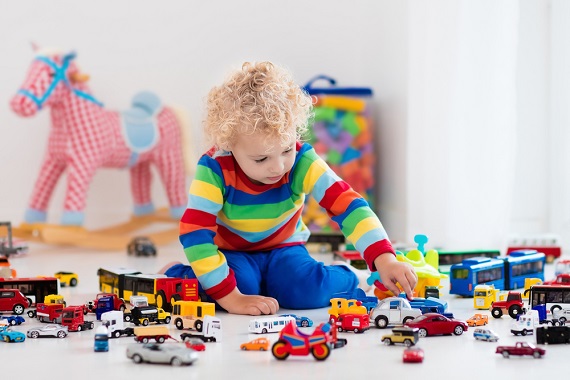Right now, Santa is checking his lists, but don’t leave it all up to him. If you are a parent or give gifts to kids, we encourage you to learn about common toy hazards so that you can sort out the naughty from the nice when it comes to toys. In 2018, injuries related to toys sent an estimated 226,000 kids to hospital emergency rooms, according to data recently issued by the U.S. Consumer Product Safety Commission. While stronger safety standards have significantly reduced the number of dangerous toys for sale over recent years, there are still problem toys that can hurt kids. If you are shopping for children’s holiday gifts, it’s important to be aware of the risks – particularly when shopping online.
The 34th-annual Trouble in Toyland report from U.S. PIRG Education Fund helps identify dangerous products and provides tips for parents and gift-givers. These annual reports have led to more than 150 recalls of unsafe toys, inspired legislation to strengthen toy safety and empowered parents to take key actions to ensure toys are safe. We’re offering safety tips from the report but encourage you to visit the site at the link above and to download and read the full report. Also, check for toy recalls and follow Safety Alerts issued by the US Consumer Protection Safety Commission
Here are “What to watch for” tips from the Trouble in Toyland Report
- Toys with sound – If a toy is too loud for you, it could be loud enough to damage your child’s hearing. Turn off the sound, remove the batteries or return the toy.
- Slime – Some slimes contain high levels of toxic boron. Consider making homemade alternatives without borax, or monitor your children at all times. If your child ingests a slime product, call Poison Control.
- Fidget spinners and toys marketed to adults – Some products, such as fidget spinners or children’s makeup, are not classified as toys and avoid certain safety standards. These products could contain higher levels of lead, choking risks and other hidden dangers. Avoid these “toys,” or watch your kids closely while they play.
- Toys with small parts – Toys marketed to ages six and older may contain small parts that are choking hazards for younger children. Parents should check all toys for age guidelines. Before your child plays with a toy for the first time, see if smaller parts fit through a toilet paper roll — indicating they pose a choking hazard. Watch our video to learn how.
- “Hatching” toys – Toys with break-apart packaging can become choking hazards for small children. Monitor your child while they open the packaging and promptly dispose of the pieces.
- Balloons – Never let a child under three play with balloons, and monitor any child under 8, as balloons are the number one choking hazard for children.
- Smart toys – Sites, apps, games and smart toys may be collecting private data from your child and exposing their information to hackers. Consider running these smart toys without connections to the internet, evaluating privacy policies when you first activate them, and monitoring your child’s use. Check out this guide for more info.
- Makeup – We found asbestos in Claire’s makeup last year. Makeup lacks necessary safety standards, which is why we recommend avoiding these products for children, or at a minimum purchasing alternatives without talc, as it can be a source of asbestos.
- Toys with small magnets -Swallowed magnets can cause serious internal damage by bunching together. Keep away from young children and monitor older children when they are playing with toys containing magnets.
- Toy jewelry with toxic metals – Cadmium is a toxic metal that can be used as a substitute for precious metals in inexpensive jewelry, including dress-up jewelry marketed to young children. If your child is under six, watch them carefully to confirm that they don’t swallow a piece of jewelry, chew on the item, or put it in their mouths. Also, consider avoiding cheaper, metallic jewelry that is imported.
- Recalled toys sold secondhand – Before using an old or pre-owned toy from an online marketplace, garage sale or passed down from a family member, parents should confirm that the product has not been recalled by visiting www.SaferProducts.gov.
- Toys already in your home, school, or childcare facility – A survey earlier this year by U.S. PIRG Education Fund found 1 in 10 surveyed childcare facilities still using recalled inclined sleepers, despite a heavily publicized recall. The same problem exists in the toy market, potentially to a greater extent, since many recalls receive less attention in the media, regardless of their risk.
2019 Worst Toy Nominees
The World Against Toys Causing Harm (W.A.T.C.H.) recently released its 2019 Nominees for the 10 Worst Toys – check out the report for photos and descriptions so you can recognize the toys, some of which would definitely have appeal. The W.A.T.C.H. report also cautions about chopping online, which it has likened to the Wild West when it comes to outlawed toys.
W.A.T.C.H. lists the following safety tips related to toys to watch out for:
- Toys Marketed On The Internet, with product descriptions that may omit warnings and cautions or provide incomplete or misleading information
- Battery Operated Toys For Children Under 8 Years Of Age since batteries may leak, overheat and explode.
- Toys With “Fur” Or “Hair”, including dolls and stuffed animals, that can be ingested and aspirated by oral age children.
- Toys With Small Removable Attachments at the end of laces and strings (e.g., bells, knobs, etc.).
- Projectile Toys, including dart guns, sling shots, and pea-shooters which shoot objects and can cause eye injuries or blindness
- Toys With Pointed Tips, And Blunt Or Sharp Edges that could crush, cut or puncture children’s skin.
- Toys With Strings Longer Than 6 Inches which could strangle small children.
- Any Crib Or Playpen Toys which are to be strung across cribs or playpens. This type of toy has resulted in strangulation deaths and injuries.
- Toys Marketed With Other Product Lines, such as food, clothing, books, cassettes and videos which could have dangerous designs and are often sold with no warnings, instructions or age recommendations.
- Toys Composed Of Flammable Material which will readily ignite when exposed to heat or flame.
- Realistic Looking Toy Weapons including guns, dart guns, Ninja weaponry, swords, toy cleavers, knives, and crossbows which promote violence.
- Toys Which Require Electricity to function and do not have step-down transformers to reduce risk of shock and electrocution.
- Toys With Small Parts that can be swallowed or aspirated, causing choking.
- Long Handled Toys For Children Up To 4 Years Of Age due to a tendency of such children to place these toys in their mouths and choke.
- Toys With Toxic Surfaces Or Components that have the potential to be ingested or cause skin irritations (e.g., some children’s’ play makeup kits have components which contain ferrocyanide, a known poison).
Reprinted from Renaissance Alliance – no usage without permission.





